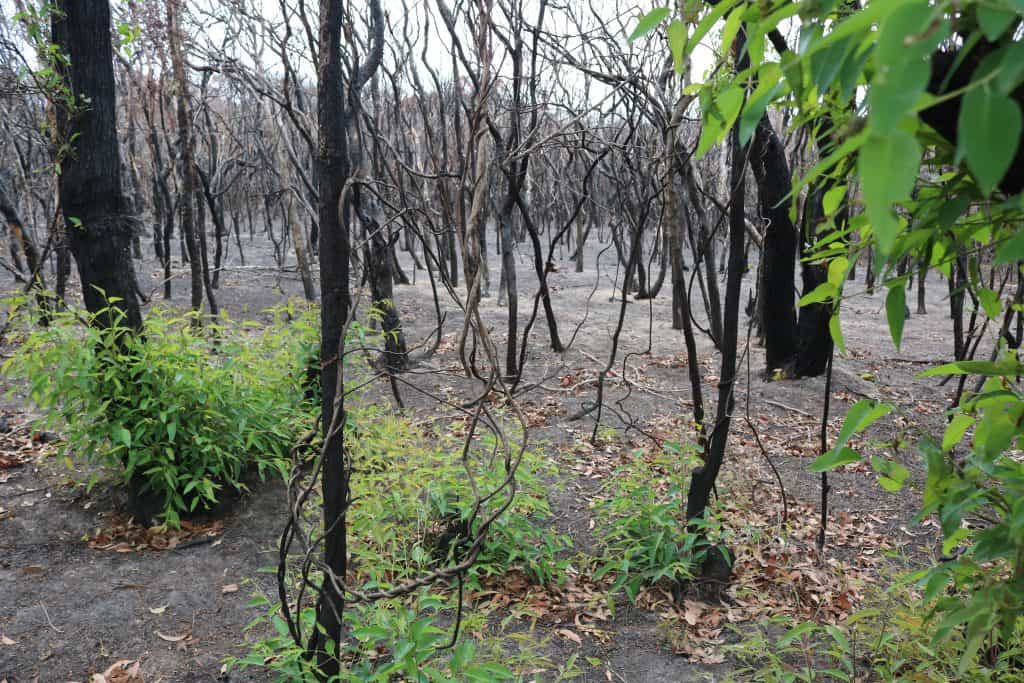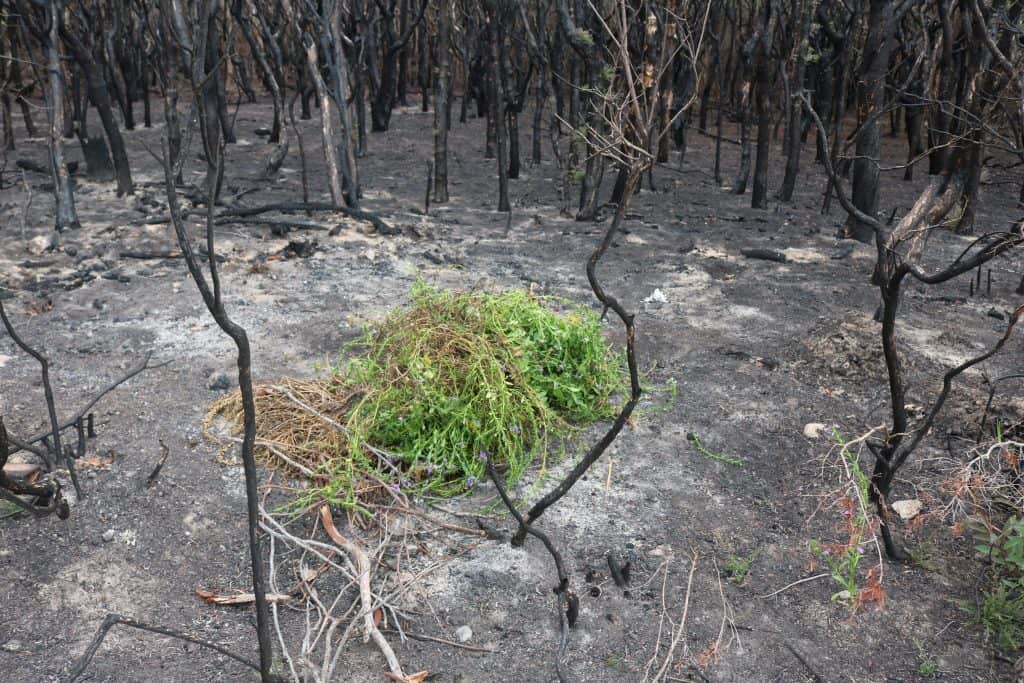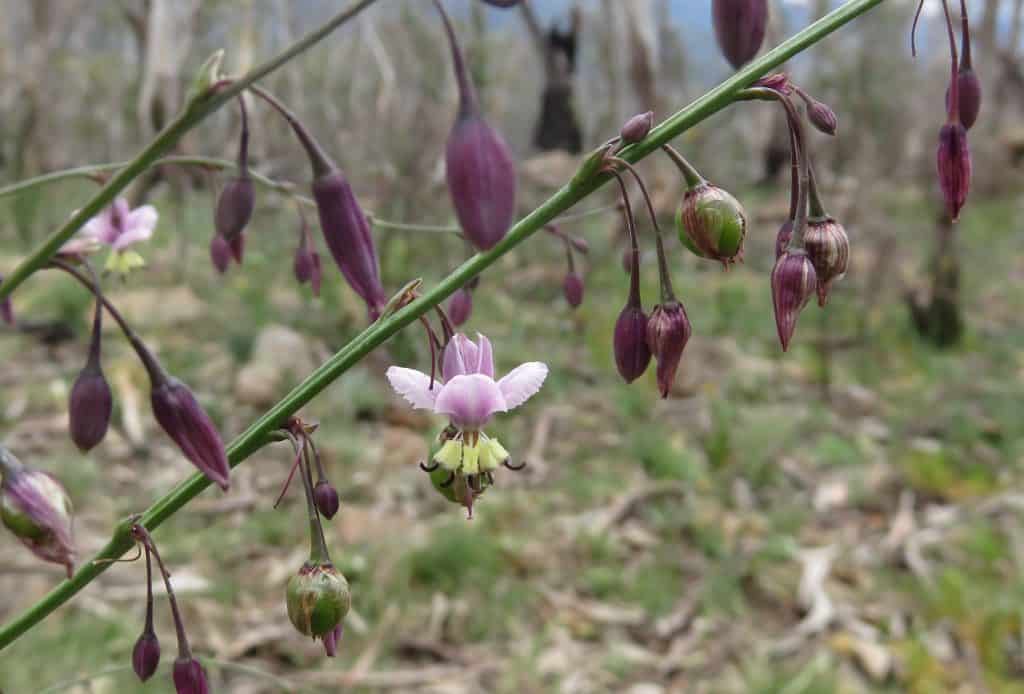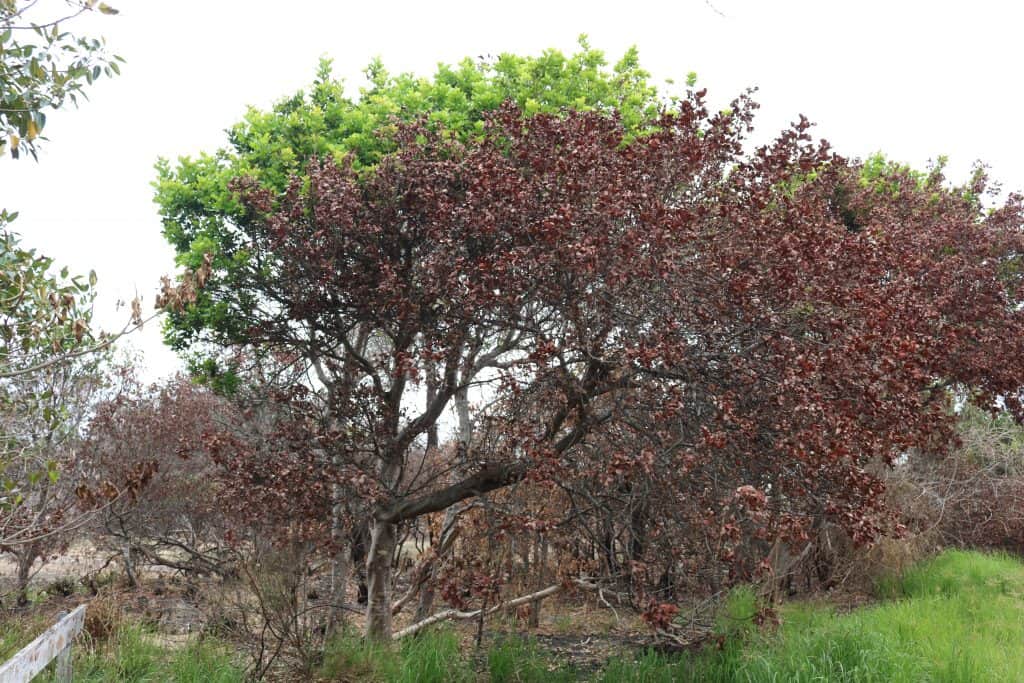The 2019/20 catastrophic bushfires have had a huge impact on our unique plants and ecological communities. Much Australian flora has evolved to cope with fire, recovering by re-sprouting or seed germination. However, some plants are sensitive to fire, especially when fires are too frequent or intense, or if drought persists, and these species may need our help to recover. Others may be limited by the impacts of weeds and feral animals.
At this stage, we don’t know which threatened plants have been lost, which will re-sprout and which will need assistance to recover. Read more here about the fire regime and its components.
What can we do to help post-fire recovery of plants and ecological communities?
Do:
- Stay out of recently burnt areas until it is safe – trees and branches may continue to fall for days, weeks and months after the fire has passed.
- When it’s safe to go in the bush, assess the site. Keep to formed tracks and do not walk in areas where plants are regrowing and seedlings emerging as this can damage their recovery and lead to soil erosion.
- In the short, medium and long term, carefully assess biodiversity loss and natural plant recovery after the fires, as some species may disappear, but many have mechanisms to cope with fire. Use standardised monitoring techniques so different sites can be compared.
- Identify threats to plant recovery such as weeds, grazers and disease.
- Use the assessment results to develop a restoration plan. Implement your plan, keep good records about what you do, monitor your site to determine the effectiveness of any restoration actions.
- Prioritise assisted natural regeneration actions where necessary within burnt bushland, and at its edges and in unburnt refugia, to control feral predators, herbivores and invasive plants. Planting is rarely needed.
- Work with others – join a local bushcare volunteer group, call your local council or local land/catchment management group, collaborate with your local university, join local and national networks.
- Learn, communicate. Attending training courses, talk to others in your area, read books, apply for funding if you need assistance. Share your information with others.
- Continue to protect burnt areas, as they need time to recover, and unburnt areas too, as these may act as refuges for biodiversity – from which species can repopulate burnt areas.
Do not:
- Plant or seed into burnt and naturally regenerating areas in the period immediately after the fire – wait to see what regenerates in the medium to long term and seek expert advice, before deciding what interventions are needed, .
- Collect seeds in burnt areas.
- Take too much seed from unburnt areas.
- Clear “dead” plants which may resprout and provide habitat and shelter for remaining wildlife.
- Dump garden waste or other organic material in the burnt areas. This can do more harm than good.
The current 2019/20 fires are unprecedented in extent and severity. Although in most cases the bush will regenerate without our help, in some locations, assessment of natural plant recovery may identify the need for cautious and well-planned human intervention. Areas where species and communities may be at risk of decline, and may benefit from expert help include places where:
- There are threatened plant species, especially those known from only one or two populations.
- Ecosystems which have elements sensitive to fire, including Gondwanan rainforests.
- Plants and communities were already showing signs of being severely stressed by drought.
- Degradation and fragmentation had occurred before the fire.
- Multiple fires occurred in quick succession, i.e. recently burnt in other wildfires or hazard reduction burning.
In these cases, assessing the natural plant recovery, as well as assessing risks to recovery (e.g. grazers and weeds) will inform the development of a restoration plan. Then, a threat management plan can be made, and native species that are not returning can be identified.
Reconstruction actions such as seed banking, direct seeding and planting etc. should only be undertaken where necessary and following expert advice.
The ANPC’s Guidelines for the Translocation of Threatened Plants in Australia will be useful where required for planning recovery of threatened plants. Care must be taken in any seed collection, storage, propagation and planting and the ANPC’s Plant Germplasm Conservation in Australia and the soon to be re-released FloraBank Guidelines are essential reading for these activities.
How plants and ecological communities recover from fire
Plants have evolved different responses (strategies) to cope with fire. Read more details about how plants cope with fire here.
PLANTS THAT ARE NOT KILLED BY FIRE:
1) Re-sprouters
Re-sprouting Strategy 1
Some trees and some shrubs have dormant buds beneath their bark and these buds survive the heat of a fire.
Re-sprouting Strategy 2
Many shrubs, grasses, sedges, lilies, terrestrial orchids and ferns regrow after fire from dormant buds in underground organs. These are protected from the heat of fires by the soil.
Re-sprouting Strategy 3
Some plants regrow from buds protected from the heat of fires by leaves or old leaf bases.
2) Flowering after fire
Plants try to flower as soon as possible after fire so that their seeds are released into the favourable post-fire conditions.
PLANTS THAT ARE KILLED BY FIRE
These species have a store of seeds (called a seed bank) before they get burnt. These seeds can be stored in one of three ways:
Seed Bank Strategy 1: Canopy seed banks
Some plants store seeds in woody fruits on the branches. When these plants are burnt, the heat from the fire causes the woody fruits to open and release the seeds.
Seed Bank Strategy 2: Soil seed banks
Many plants store seeds in the soil. These seeds wait until a fire has passed before they germinate.
Seed Bank Strategy 3: No local seed bank
A few plants rely on seeds being dispersed from unburnt areas to regrow after a fire.
Useful reading:
Brodie, L. 2020, Giving bushland a chance to recover after wildfires, Australian Association of Bush Regenerators
Commander LE, Coates DJ, Broadhurst L, Offord CA, Makinson RO, Matthes M (Eds) (2018) ‘Guidelines for the Translocation of Threatened Plants in Australia (Third edn).’ (Australian Network for Plant Conservation: Canberra). https://www.anpc.asn.au/translocation/
Commander L, Zimmer H (2020) Yes, native plants can flourish after bushfire. But there’s only so much hardship they can take. In ‘The Conversation’ https://theconversation.com/yes-native-plants-can-flourish-after-bushfire-but-theres-only-so-much-hardship-they-can-take-129748
Dickman C, Driscoll D, Garnett S, Keith D, Legge S, Lindenmayer D, Maron M, Reside A, Ritchie E, Watson J, Wintle B, Woinarski J (2020) After the catastrophe: a blueprint for a conservation response to large-scale ecological disaster. Threatened Species Recovery Hub.
Driscoll, D (2020) Pulling out weeds is the best thing you can do to help nature recover from the fires. In ‘The Conversation’ https://theconversation.com/pulling-out-weeds-is-the-best-thing-you-can-do-to-help-nature-recover-from-the-fires-130296
Gann GD, McDonald T, Walder B, Aronson J, Nelson CR, Jonson J, Hallett JG, Eisenberg C, Guariguata MR, Liu J, Hua F, Echeverría C, Gonzales E, Shaw N, Decleer K, Dixon KW (2019) International principles and standards for the practice of ecological restoration. Second edition. Restoration Ecology.
Offord CA, Meagher PF (Eds) (2009) ‘Plant Germplasm Conservation in Australia – strategies and guidelines for developing, managing and utilising ex situ collections.’ (Australian Network for Plant Conservation Inc: Canberra).
Healthy seeds project website: https://www.anpc.asn.au/healthy-seeds/
Further information is available on our Bushfire 2019-2020 Resource Page




